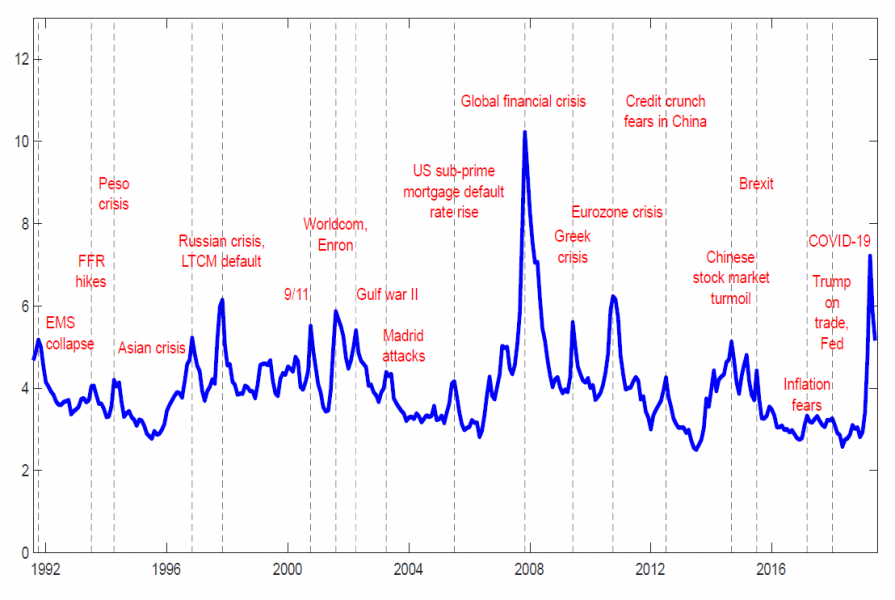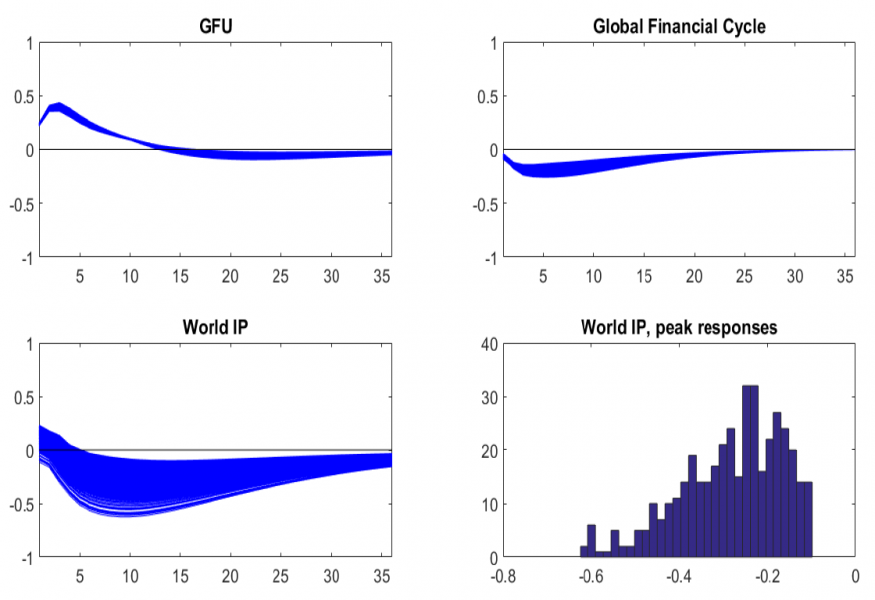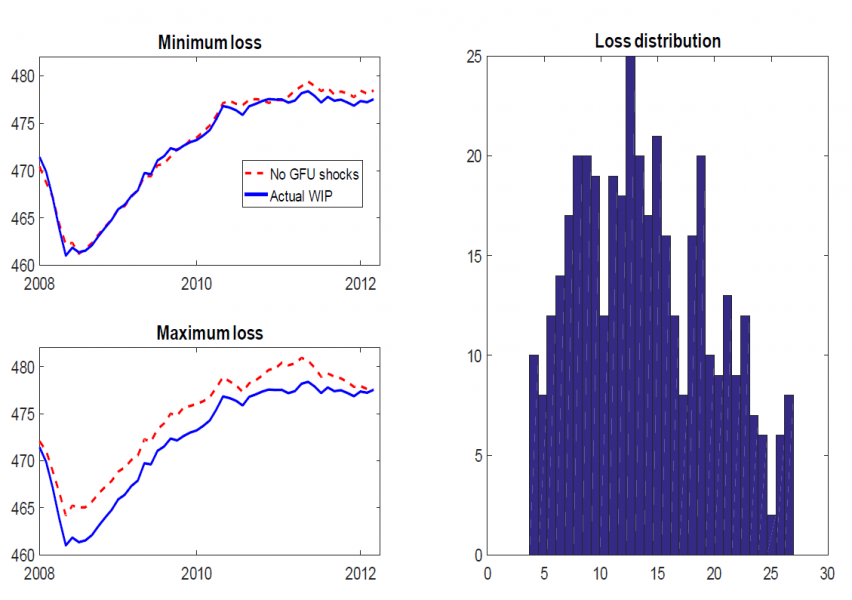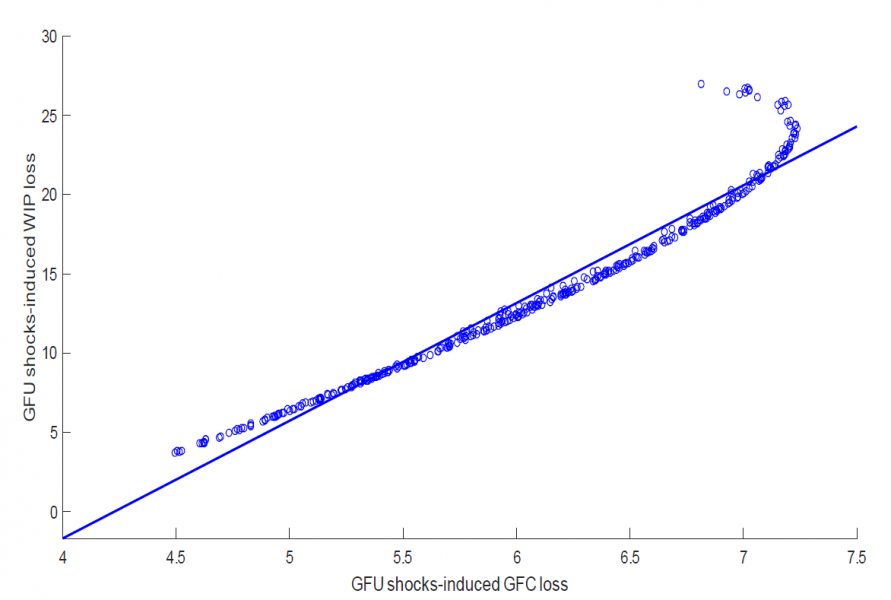References
Alfaro, I., N. Bloom, and X. Lin, 2021, The Finance Uncertainty Multiplier, available at https://nbloom.people.stanford.edu/research.
Baumeister, C., and J.D. Hamilton, 2019, Structural Interpretation of Vector Autoregressions with Incomplete Identification: Revisiting the Role of Oil Supply and Demand Shocks, American Economic Review, 109(5), 1873-1910.
Caggiano, G., and E. Castelnuovo, Global Uncertainty, Bank of Finland Research Discussion Paper No. 1/2021.
Lenza, M. and G. Primiceri, 2020, How to Estimate a VAR after March 2020, NBER Working Paper No. 27771.
Miranda-Agrippino, S. and H. Rey, 2020, U.S. Monetary Policy and the Global Financial Cycle, Review of Economic Studies, 87(6), 2754–2776.
Moench, E., S. Ng, and S. Potter, 2013, Dynamic Hierarchical Factor Model, Review of Economics and Statistics, 95(5), 1811-1817.








